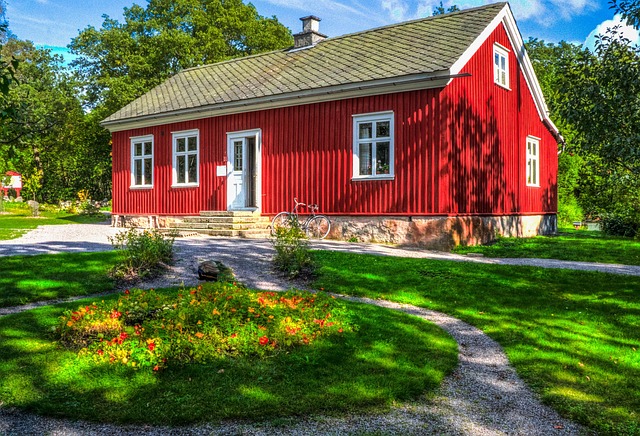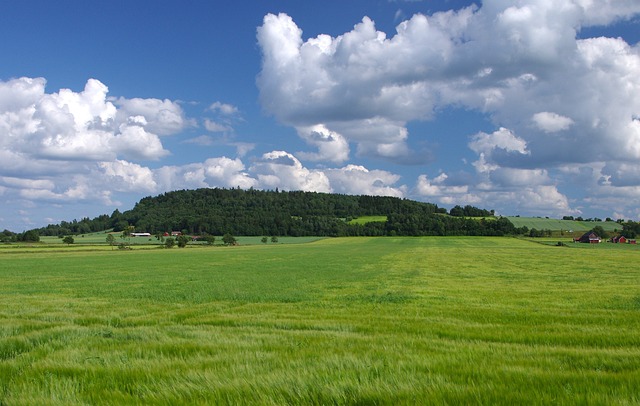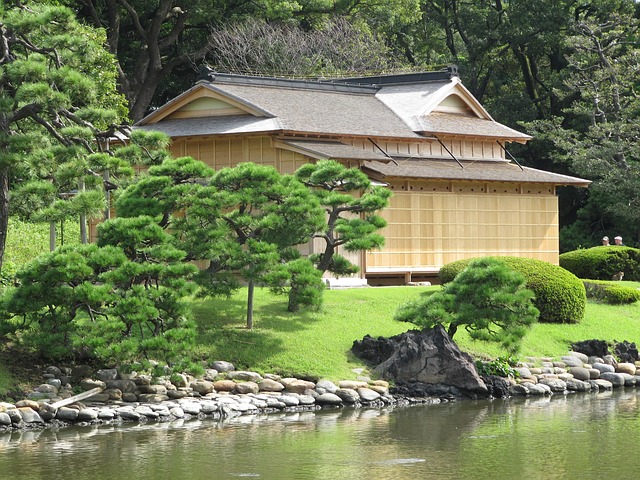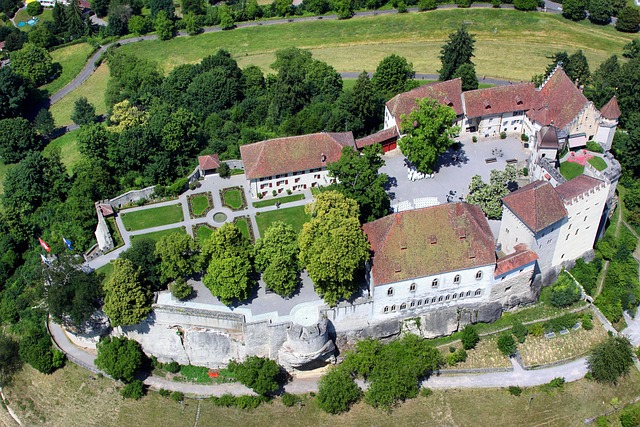The real estate industry is embracing sustainability with innovative building materials and design strategies. Architects and builders are using recycled materials like reclaimed wood and plastic bottles, which reduce environmental impact while enhancing performance and aesthetics. Advanced features such as passive cooling systems, optimized natural lighting, and efficient insulation further decrease energy consumption and carbon emissions. Energy-efficient practices not only mitigate climate change but also attract environmentally conscious buyers, making these developments profitable investments. Strategic incorporation of natural lighting, insulation, and ventilation reduces operational costs and property values while promoting healthier living spaces to meet the growing demand for eco-conscious real estate.
In the realm of real estate, the quest for energy-efficient solutions is not just an environmental imperative but a strategic necessity. As the world navigates climate change, reducing carbon footprints through innovative building materials and design strategies has become paramount. This article explores how eco-friendly materials and passive design elements curb energy consumption in construction. Additionally, it delves into sustainable energy sources integration and smart grids for optimal power management. Water conservation and efficient waste management practices are also scrutinized, highlighting their role in minimizing the carbon footprint of real estate developments.
Innovative Building Materials and Design Strategies
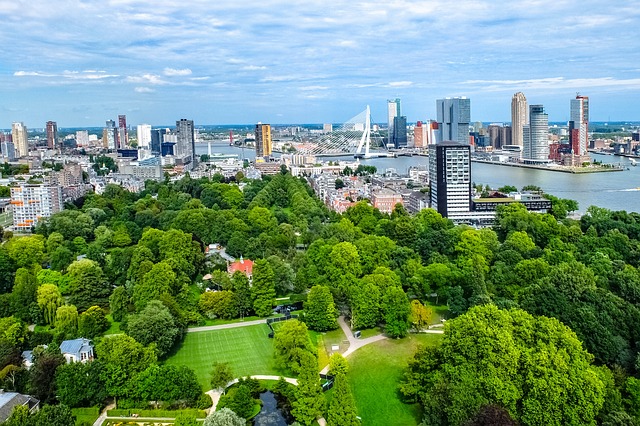
The real estate industry is experiencing a significant shift towards sustainability with innovative building materials and design strategies emerging as powerful tools to reduce carbon footprints. Architects and builders are now exploring eco-friendly alternatives that not only minimize environmental impact but also offer enhanced performance and aesthetics. For instance, the use of recycled materials such as reclaimed wood and plastic bottles in construction is gaining traction, providing a unique blend of sustainability and style. These materials significantly lower energy consumption during production and reduce waste, contributing to a greener planet.
Additionally, advanced design strategies like passive cooling systems, natural lighting optimization, and efficient insulation are being integrated into modern buildings. Such approaches harness the power of nature, decreasing reliance on artificial heating and cooling mechanisms. As a result, carbon emissions are cut down, leading to more energy-efficient and environmentally conscious real estate developments.
– Exploring eco-friendly materials reducing energy consumption in construction
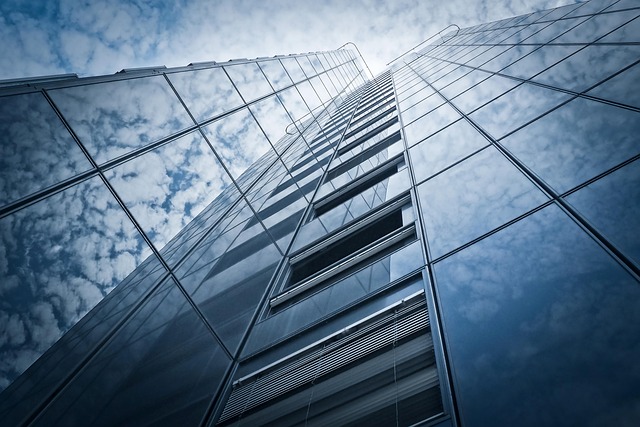
In the realm of real estate, the search for energy-efficient solutions is not just an environmental imperative but a strategic move for developers and property owners. By exploring eco-friendly materials, the construction industry can significantly reduce its carbon footprint. Innovations in building materials offer promising options like insulating foams made from recycled content, which not only cut down on energy loss but also contribute to a more sustainable ecosystem. These advanced insulators are designed to lock in heat during colder months and keep interior spaces cool in warmer climates, thereby decreasing the reliance on heating and cooling systems.
Additionally, incorporating natural ventilation systems and daylight harvesting techniques in architectural designs can further enhance energy efficiency. Materials that allow for better air circulation and maximize natural light exposure can dramatically reduce the energy demands of a building. This shift towards environmentally conscious construction practices not only benefits the climate but also appeals to increasingly eco-conscious homebuyers, creating a win-win scenario for both developers and the planet.
– Passive design elements like natural lighting, insulation, and ventilation
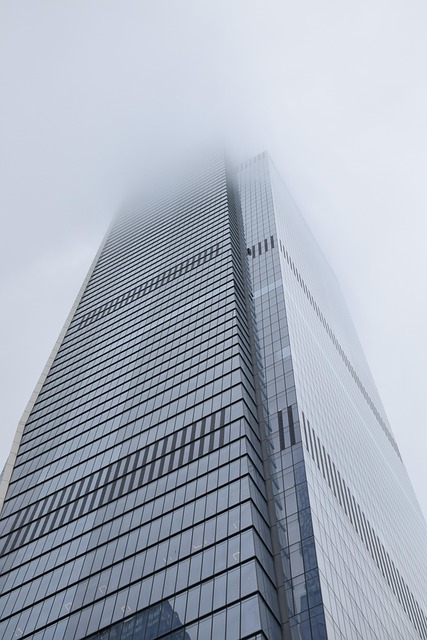
In the realm of real estate, energy-efficient solutions are not just environmental imperatives but also smart investments that can dramatically reduce carbon footprints and operational costs. Passive design elements play a pivotal role in this transition. Natural lighting, for instance, not only minimizes the need for artificial illumination but also contributes to the overall comfort and aesthetics of buildings. By strategically placing windows and skylights, builders and designers can harness daylight, reducing electricity consumption throughout the day.
Insulation and ventilation are equally vital components. Proper insulation helps maintain interior temperatures, thereby decreasing the strain on heating and cooling systems. This, in turn, lowers energy usage and greenhouse gas emissions. Ventilation systems designed to maximize airflow without compromising energy efficiency ensure fresh air circulation while minimizing the loss of heated or cooled air. These passive design elements not only promote sustainability but also create healthier living and working spaces, enhancing the overall value of properties in an increasingly eco-conscious market.
